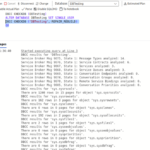
Among the many impressive tools and applications of big data, predictive analytics stands apart as one of the most effective. By utilizing statistical models and machine learning algorithms to analyze data in order to make forecasts about upcoming events, businesses are able to gain valuable insights and make decisions that can give them a competitive edge.
For Linux users, there are many incredible open-source tools available to take full advantage of such advanced analytics. From accessing data straight from databases to creating models and algorithms for forecasting – many of these tools can be accessed using familiar Linux commands and programming languages.
In this article, we’ll explore how you can begin using predictive analytics on Linux, including which tools you should use and what steps you need to take to get the best out of your data. Let’s get into it.
Setting up your Linux environment
The first step in getting started with predictive analytics on Linux is to set up your environment. This will typically involve installing a Linux distribution such as Ubuntu or Mint and configuring virtual environments to keep your software and dependencies organized.
Once your Linux environment is set up, you’ll need to install the necessary software for predictive analytics. This will typically include Python, R, and a variety of libraries and frameworks for data analysis and machine learning. Some popular choices include Pandas for data manipulation, Matplotlib and Seaborn for data visualization, and scikit-learn and TensorFlow for building and evaluating machine learning models.
Exploring and preparing your data
Once your Linux environment is configured, you can start exploring the data you’ll be working with. This will involve inspecting the structure and format of the data, as well as cleaning and preprocessing it in order to make it suitable for analysis.
Using tools like Pandas or sqlite3 you can read datasets from CSV files or databases straight into a programming environment such as Python or R. From there, you’ll be able to manipulate the data using various functions and operations before proceeding to visualize it with Matplotlib or Seaborn.
As for databases, you can use a variety of tools to access and query your data, such as MySQL or PostgreSQL. You’ll also be able to store the results of your analysis in these databases for easy retrieval later.
Creating models and algorithms
The next step is to create models and algorithms that take advantage of predictive analytics. This usually involves selecting an appropriate algorithm according to the data and the task you’re trying to solve.
Many of the most popular algorithms for predictive analytics, such as linear regression and random forests, can be implemented in Python or R using libraries such as scikit-learn and TensorFlow. Once your models are created, you’ll need to evaluate them on a test dataset in order to assess their accuracy and ensure they’re producing reliable results.
Deploying models and analyzing results
Once you’ve created your models and algorithms, it’s time to deploy them and start analyzing the results. Depending on the task at hand, this could involve generating forecasts for upcoming events or making predictions about customer behavior using data collated from event streams.
Analyzing results from predictive analytics usually involves making use of various metrics such as precision, recall, and accuracy. By assessing these metrics you’ll be able to determine how effective your models are and make improvements accordingly.
Remember, deploying a predictive model is not the end of the process. It’s important to monitor the model’s performance over time and make updates as new data becomes available. This is known as “model maintenance” and it’s an essential step in keeping your predictive model accurate and relevant.
Tips for getting the best out of predictive analytics on Linux
Now that you know how to set up your Linux environment, explore and pre-process data, create models and algorithms, and deploy them to analyze results, here are a few tips that will help you get the most out of predictive analytics on Linux.
- Use version control – Version control systems such as Git are incredibly useful when working on predictive analytics projects. They allow you to track changes and collaborate with others on the same codebase.
- Take advantage of virtual environments – Virtual environments are essential for keeping your software and dependencies organized and up to date. They also help you keep your Linux environment secure by preventing malicious code from running on it.
- Practice data visualization – Data visualization is key to understanding and interpreting the results of your predictive analytics models. Using tools like Matplotlib or Seaborn you can create powerful visualizations that clearly illustrate the data and results.
- Automate wherever possible – Automation is incredibly useful when dealing with large datasets or complex models. By automating tasks such as data pre-processing and model building, you can streamline your workflow and save valuable time.
Final word
Predictive analytics are incredibly powerful tools for uncovering insights from data. With the right skills and knowledge, you can use them to make more informed decisions and improve your business operations. If you’re new to predictive analytics, using Linux as your development platform can make the process easier and smoother.
With its powerful tools and capabilities, open-source libraries, and user-friendly environment, Linux is the perfect platform for predictive analytics – just be sure to practice good security protocols and stay up-to-date with your software and dependencies.
For more information, click here





